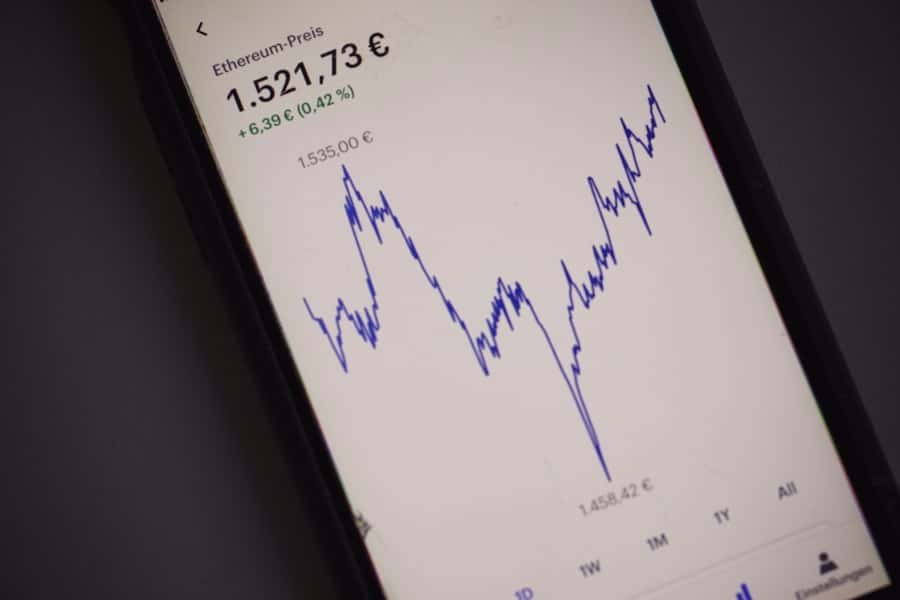Monetary policy encompasses actions taken by a nation’s central bank to regulate the money supply and achieve macroeconomic objectives, including inflation control, currency exchange rate stabilization, and economic growth promotion. Central banks employ various instruments, such as open market operations, reserve requirements, and discount rates, to influence money circulation and interest rates within the economy. By adjusting these tools, central banks can affect the behavior of banks and consumers, thereby impacting overall economic activity.
Monetary policy is frequently implemented alongside fiscal policy, which involves government spending and taxation, to attain economic stability. During periods of economic overheating, central banks may implement contractionary monetary policy by increasing interest rates and reducing the money supply to mitigate inflation. Conversely, during economic recessions, central banks may adopt expansionary monetary policy by lowering interest rates and increasing the money supply to stimulate economic activity.
A thorough understanding of monetary policy mechanisms and their economic impacts is essential for policymakers, economists, and investors to make informed decisions and forecast future economic conditions.
Key Takeaways
- Monetary policy refers to the actions taken by a central bank to control the money supply and interest rates to achieve economic goals.
- Monetary policy plays a crucial role in maintaining economic stability by influencing inflation, employment, and economic growth.
- During a crisis, monetary policy can be used to mitigate the impact by adjusting interest rates, implementing quantitative easing, and providing liquidity to financial institutions.
- Central banks use various tools and strategies such as open market operations, discount rates, and reserve requirements to manage crises and stabilize the economy.
- While monetary policy can be effective in addressing economic crises, it also faces challenges and limitations such as the zero lower bound and the potential for unintended consequences. The future of monetary policy in crisis management will likely involve a combination of traditional and unconventional measures to address new challenges.
The Impact of Monetary Policy on Economic Stability
Monetary policy plays a crucial role in maintaining economic stability by influencing key economic variables such as inflation, unemployment, and economic growth. When the central bank tightens monetary policy by raising interest rates and reducing the money supply, it can help control inflation by reducing consumer spending and investment. This can prevent the economy from overheating and experiencing rapid price increases, which can erode the purchasing power of consumers and reduce their standard of living.
Conversely, when the central bank eases monetary policy by lowering interest rates and increasing the money supply, it can stimulate economic activity by encouraging borrowing and spending. This can help reduce unemployment by creating more job opportunities and boosting consumer confidence. Additionally, lower interest rates can make it cheaper for businesses to borrow money for investment, which can lead to increased productivity and economic growth.
Overall, the impact of monetary policy on economic stability is significant, as it can help prevent extreme fluctuations in economic activity and promote sustainable growth over time.
The Role of Monetary Policy in Crisis Mitigation

Monetary policy plays a critical role in mitigating economic crises by providing a framework for central banks to respond to unexpected shocks and disruptions in the economy. During times of crisis, such as financial panics, recessions, or currency crises, central banks can use monetary policy tools to stabilize financial markets, restore confidence, and support economic recovery. For example, during the 2008 global financial crisis, central banks around the world implemented aggressive monetary policy measures, such as lowering interest rates to near-zero levels and implementing quantitative easing programs to provide liquidity to financial institutions.
By taking swift and decisive action through monetary policy, central banks can help prevent a crisis from escalating and spreading throughout the economy. This can help limit the negative impact on businesses, consumers, and financial institutions, thereby reducing the severity and duration of the crisis. Additionally, by signaling a commitment to supporting economic stability through monetary policy, central banks can help restore confidence in the financial system and encourage investment and spending.
Overall, the role of monetary policy in crisis mitigation is essential for safeguarding the economy from severe disruptions and promoting a timely recovery.
Tools and Strategies of Monetary Policy in Crisis Management
Central banks have a range of tools and strategies at their disposal to manage economic crises through monetary policy. One of the primary tools is open market operations, which involve buying or selling government securities to influence the money supply and interest rates in the economy. By purchasing government securities, central banks can inject liquidity into financial markets and lower interest rates to stimulate borrowing and spending.
Conversely, by selling government securities, central banks can reduce the money supply and raise interest rates to curb inflationary pressures. Another tool used in crisis management is the adjustment of reserve requirements for banks, which determines the amount of reserves that banks must hold against their deposits. By increasing reserve requirements, central banks can reduce the amount of money available for lending and slow down economic activity.
Conversely, by lowering reserve requirements, central banks can increase the amount of money available for lending and stimulate economic growth. Additionally, central banks can use discount rate policies to influence the cost of borrowing for financial institutions, thereby impacting their willingness to lend to businesses and consumers. In times of crisis, central banks may also employ unconventional monetary policy measures such as quantitative easing, which involves purchasing long-term securities to lower long-term interest rates and provide additional liquidity to financial markets.
These tools and strategies are essential for central banks to effectively manage economic crises and support financial stability.
The Effectiveness of Monetary Policy in Addressing Economic Crises
The effectiveness of monetary policy in addressing economic crises depends on various factors such as the severity of the crisis, the flexibility of monetary policy tools, and the coordination with fiscal policy measures. In general, monetary policy can be effective in addressing crises by providing liquidity to financial markets, lowering interest rates to stimulate borrowing and spending, and restoring confidence in the economy. By taking swift and decisive action through monetary policy, central banks can help prevent a crisis from escalating and support a timely recovery.
During the 2008 global financial crisis, central banks around the world implemented aggressive monetary policy measures such as lowering interest rates to near-zero levels and implementing quantitative easing programs. These measures helped stabilize financial markets, restore confidence, and support economic recovery. However, there are limitations to the effectiveness of monetary policy in addressing crises, particularly when interest rates are already at very low levels or when there are structural issues in the economy that cannot be addressed solely through monetary policy.
In such cases, coordination with fiscal policy measures such as government spending and taxation may be necessary to provide additional support for economic recovery. Overall, while monetary policy can be effective in addressing economic crises, its effectiveness depends on a range of factors and may require a coordinated approach with other policy measures.
The Challenges and Limitations of Monetary Policy in Crisis Mitigation

Despite its importance in crisis mitigation, monetary policy faces several challenges and limitations in effectively managing economic crises. One challenge is the zero lower bound on interest rates, which occurs when interest rates are already at very low levels and cannot be lowered further to stimulate borrowing and spending. This limits the effectiveness of traditional monetary policy tools in supporting economic recovery during severe crises.
Another challenge is the potential for unintended consequences of monetary policy actions. For example, aggressive easing measures such as quantitative easing can lead to asset price bubbles or excessive risk-taking by investors seeking higher returns. Additionally, prolonged periods of low interest rates can distort investment decisions and lead to misallocation of resources in the economy.
Furthermore, there are limitations to the ability of monetary policy to address structural issues in the economy such as labor market rigidities or productivity growth. These issues may require structural reforms or targeted fiscal policies to address effectively.
The Future of Monetary Policy in Crisis Management
Looking ahead, the future of monetary policy in crisis management will likely involve a combination of traditional and unconventional measures tailored to specific economic conditions. Central banks may need to explore new tools and strategies to address challenges such as the zero lower bound on interest rates and potential unintended consequences of monetary policy actions. Additionally, there may be a greater emphasis on coordination between monetary policy and fiscal policy measures to provide comprehensive support for economic recovery during crises.
This could involve targeted government spending on infrastructure projects or social programs to stimulate demand and create jobs. Furthermore, central banks may need to enhance communication strategies to effectively signal their commitment to supporting economic stability through monetary policy. Clear communication can help manage expectations and guide market participants’ behavior during times of uncertainty.
Overall, while monetary policy will continue to play a crucial role in crisis management, it will need to adapt to evolving economic conditions and challenges to effectively support financial stability and promote a timely recovery from crises.
If you’re interested in learning more about the role of monetary policy in crisis mitigation, you should check out the article “The Impact of Central Bank Policies on Economic Stability” on The Econosphere. This article delves into the various tools and strategies that central banks use to stabilize the economy during times of crisis, providing valuable insights into the topic. Whether you’re a student, economist, or simply curious about the subject, this article is a must-read.
FAQs
What is monetary policy?
Monetary policy refers to the actions taken by a central bank to control the money supply and interest rates in order to achieve economic goals such as price stability, full employment, and stable economic growth.
What is the role of monetary policy in crisis mitigation?
Monetary policy plays a crucial role in crisis mitigation by influencing the overall economic conditions through the control of interest rates, money supply, and credit availability. During a crisis, central banks can use monetary policy tools to stabilize financial markets, support economic activity, and prevent a deeper downturn.
What are the key monetary policy tools used in crisis mitigation?
The key monetary policy tools used in crisis mitigation include open market operations, discount rate changes, and reserve requirement adjustments. These tools are used to influence the money supply, interest rates, and credit conditions in the economy.
How does monetary policy impact financial markets during a crisis?
Monetary policy can impact financial markets during a crisis by influencing interest rates, which in turn affects borrowing and investment decisions. By adjusting monetary policy, central banks can provide liquidity to financial institutions, stabilize asset prices, and restore confidence in the financial system.
What are the limitations of monetary policy in crisis mitigation?
Monetary policy may have limitations in crisis mitigation, particularly when interest rates are already low and the effectiveness of further rate cuts is limited. Additionally, monetary policy may not directly address underlying structural issues in the economy that contribute to the crisis. In such cases, fiscal policy and structural reforms may be needed to complement monetary policy measures.








